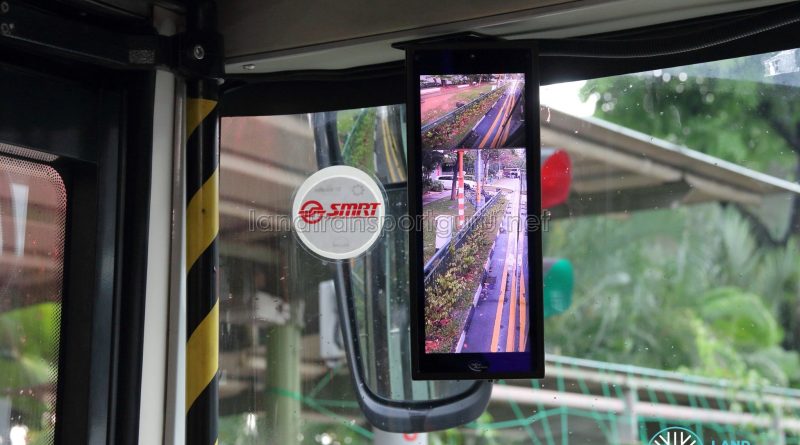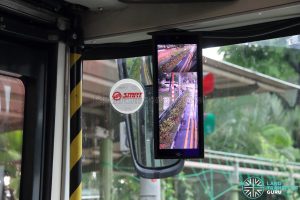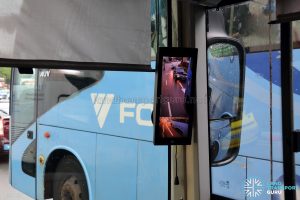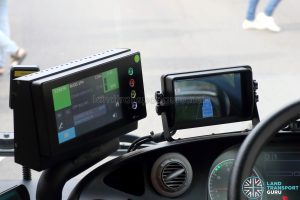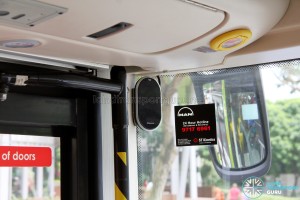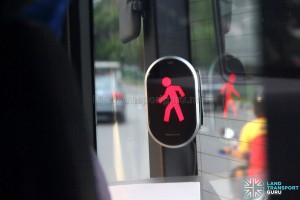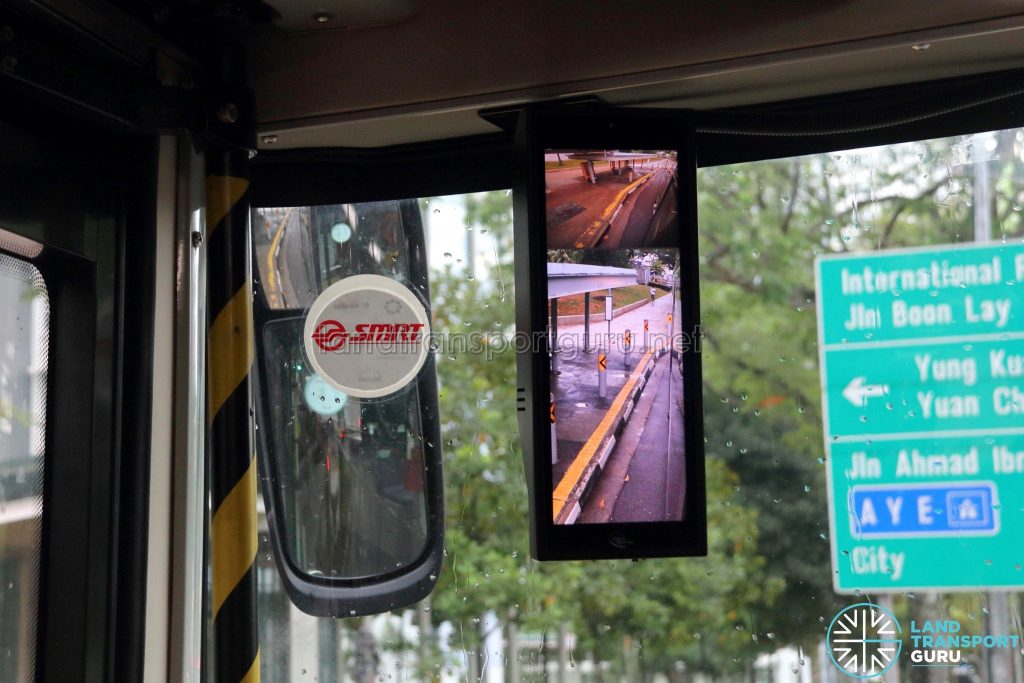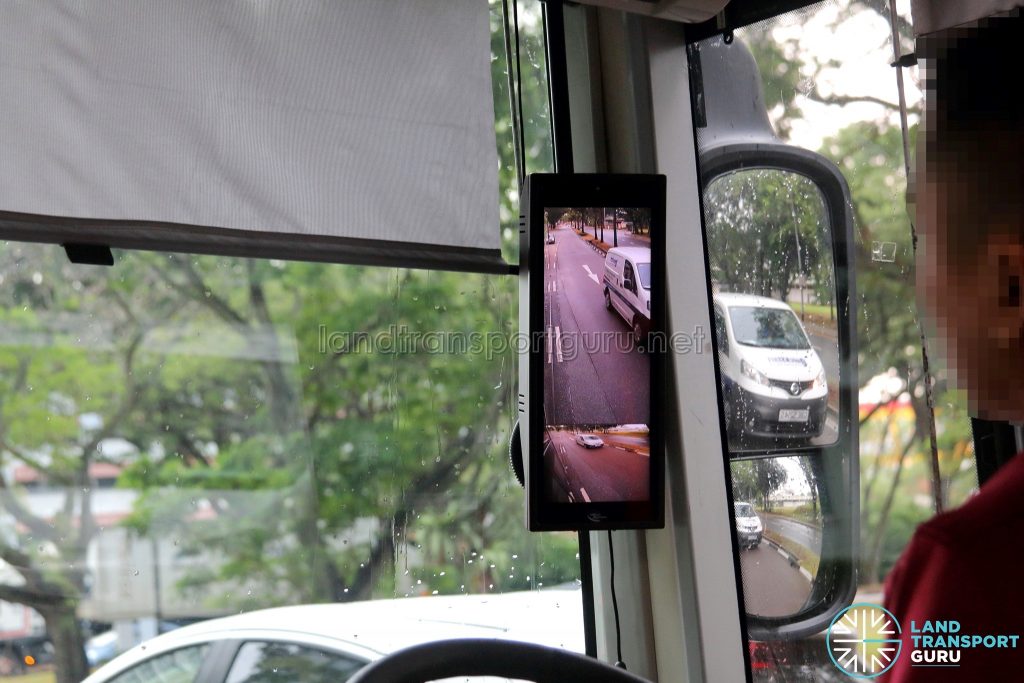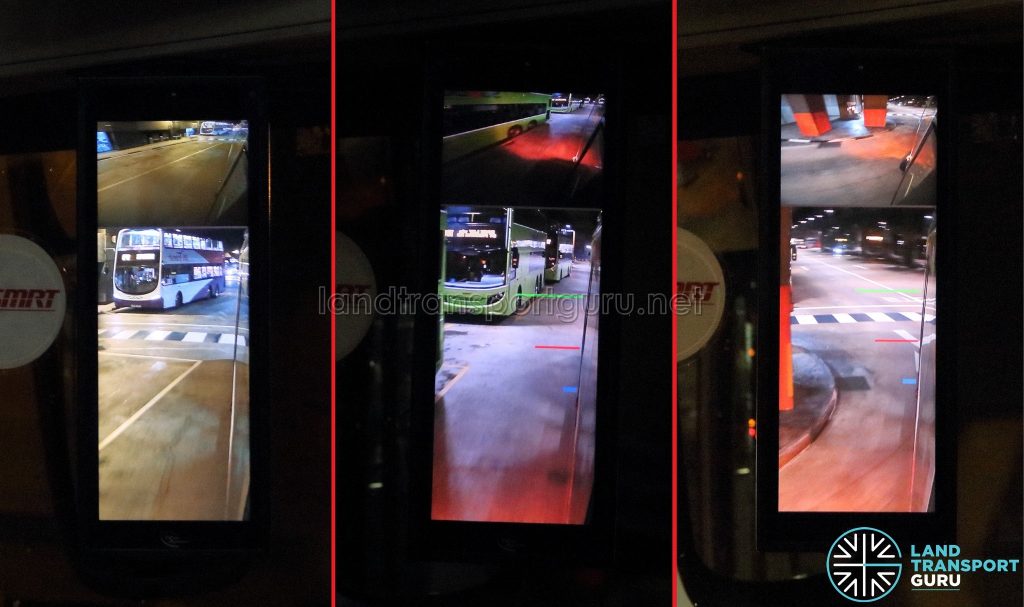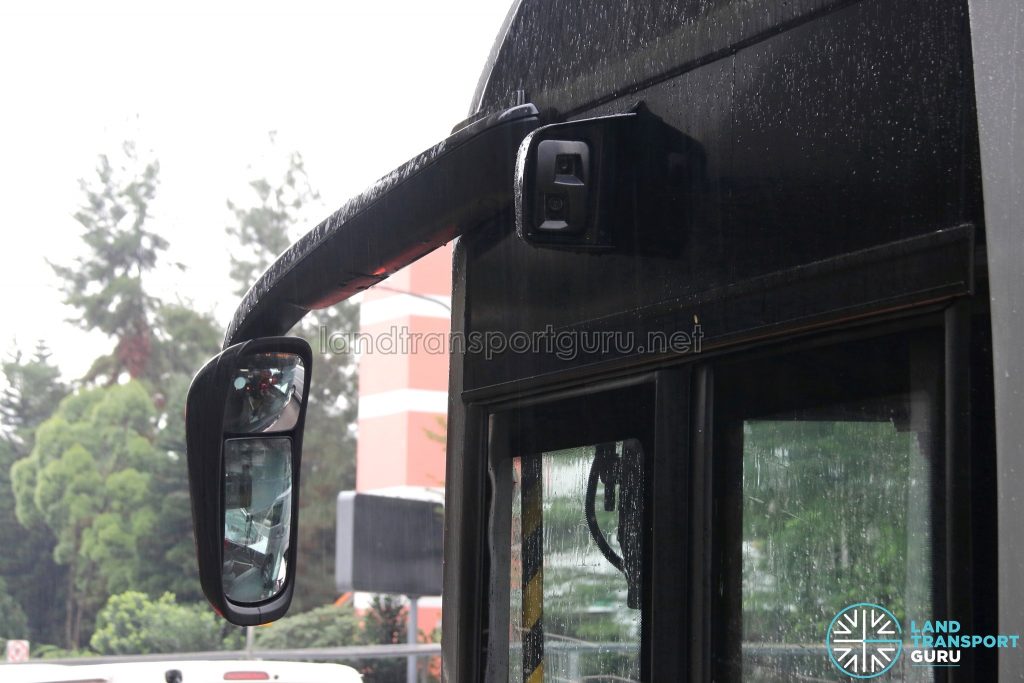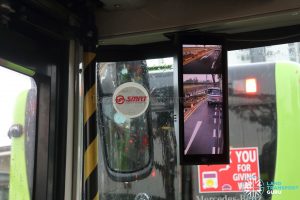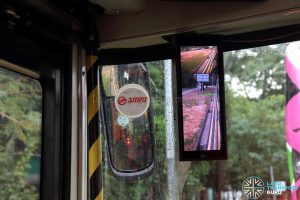Smart-Vision Rearview Cameras have been trialled on Singapore Public Buses for the first time. Developed by French company Vision Systems, the system is intended to replace traditional mirrors with high-definition digital cameras and interior displays, for optimized visibility and enhanced ergonomics.
Compared with a standard rearview mirror, the interior displays eliminate glare and is adjusted automatically for brightness regardless of ambient lighting. They also offer a wider field of view, for Bus Captains to better monitor their blindspots.
These Smart-Vision rearview cameras are just one of several Advanced Driver Assistance Systems (ADAS) being trialled and/or implemented on the public bus fleet.
Background – Advanced Driver Assistance Systems
In the Committee of Supply Debate 2019, it was mentioned that enhanced safety management systems are already standard requirements for new public buses procured. These safety management systems include blind spot detection and warning systems.
Apart from Smart-Vision rearview cameras, other blind-spot detection and warning systems have already been already rolled out on new public buses. These include the I-SAW-U Driver Warning System installed on MAN A95 (Euro 6) and MAN A22 (Euro 6) buses, as well as the Mobileye Shield+ Collision Avoidance System installed on Volvo B5LH buses.
Trial Details
Currently, the Smart-Vision Rearview Camera system is installed on an SMRT MAN A22 (SMB1316T), which is deployed on Bus Service 178 on a regular basis. The system was understood to be installed in Mid-February 2019, with the bus returning to revenue service in early March 2019.
Smart-Vision System
Both displays screens are mounted on the interior of the bus to eliminate reflections from windows. The placement in similar locations to normal mirrors allows drivers to adjust easily to the new system. On the trial bus, the display screens are located next to the regular mirrors and easily within the Bus Captain’s line of sight.
The view from the Smart-Vision cameras is digitally processed to compensate for lighting, shadows or glare. Screen brightness is adjusted automatically to offer good visibility, day and night.
The left and right display units are identical, with a normal mirror view occupying most of the screen, and the blind spot view occupying the smaller portion of the screen.
While the blind spot view is typically configured to display underneath the normal mirror view, the left display screen inverts this, to model the layout of the existing MAN A22 mirror which places the blindspot mirror above the normal view mirror.
Smart-Vision maintains image quality in all conditions, with software used to removes any distortion from raindrops or dirt on the lens. The system appeared to function faultlessly in rainy weather. In addition, the system performs very well in low-light conditions, offering much-improved visual clarity as compared to viewing from a regular mirror.
Exterior Cameras
Mounted to both left and right sides of the vehicle, these exterior cameras come in a single housing and contain two separate cameras, covering the normal view and blind spot view.
In addition to improved visibility for drivers, bus operators benefit from reduced risk of mirror damage or injury to passengers or pedestrians, should the system replace the need for vehicle side mirrors. A reduction in aerodynamic resistance is additionally expected to deliver a small fuel economy benefit, especially at higher speeds.
Overseas Use
Bus manufacturer Alexander Dennis Limited (ADL) has offered the Smart-Vision camera system on its buses, with First Glasgow and Trent Barton being the first operators to take delivery of these buses in 2018, featuring only the Smart-Vision camera system and without exterior mirrors.
